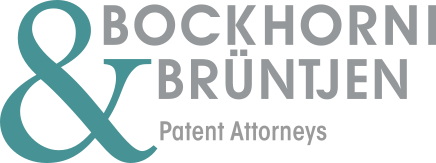In order to differentiate a European patent application or a European patent from the prior art, it is often necessary to amend the main claim in its original version, for example by including an additional feature in the claim, limiting a range of parameter values, specifying a term or deleting alternatives.
According to Article 123(2) EPC, the European patent application and the European patent may not be amended in such a way that their subject-matter extends beyond the content of the application as originally filed. The idea underlying Article 123(2) EPC is that an applicant should not be allowed to improve its position by adding subject-matter not disclosed in the application as filed, as this would give rise to an unwarranted advantage and could be damaging to the legal security of third parties relying on the content of the original application.
The examining and opposition divisions of the European Patent Office are known to apply rather strict standards regarding the admissibility of amendments. The so-called “gold standard” is that an amendment may only be made within the scope of what the person skilled in the art is able to deduct directly and unambiguously from the entirety of the original documents, using general expert knowledge, objectively and in relation to the date of filing.
Special case arrangements arise if the patent application contains lists of features, for example:
Component X is present in an amount of from 20 to 80% by weight, preferably from 30 to 70% by weight, more preferably from 40 to 60% by weight, particularly preferably from 45 to 55% by weight.
The fastening element can be in the form of a screw, a nail, a bolt, a pin, or in the form of an adhesive mass.
As a rule of thumb, the subject matter of claim 1 cannot be restricted by means of features selected from several lists (multiple selection).
In its decision T 1621/16, the Board of Appeal 3.3.06 of the EPO now concretizes the case-law of the list problem for the case where a feature is described on the basis of a list of “converging alternatives”, i.e. as in the first example mentioned above.
The Board of Appeal decided that the selection of a more or less preferred element from such a list should not be treated as an arbitrary selection, since this selection would not result in one invention being selected from a plurality of different options, but would rather lead to the invention being directed towards a subject-matter based on a more or less restricted version of one feature.
In doing so, the Board of Appeal laid down criteria which shall be fulfilled in order for a claim which has been amended on the basis of a multiple choice from lists of converging alternatives to be considered to meet the requirements of Article 123(2) EPC.
The conditions are:
the subject-matter resulting from the multiple selection does not involve an undisclosed technical contribution, and
the application as filed contains a clear indication towards the combination of features resulting from the multiple selection.
The required clear indication can be found, e.g., in the examples or in the specific embodiments of the invention. The Board of Appeal concluded that if an amended claim falls within one of the examples or embodiments, this is an indication that the combination resulting from the multiple choice is not arbitrary but rather appropriate, in the sense that the claim converges towards the most preferred embodiment.
Note:
In T1621/16, the EPO’s Board of Appeal supports the practice of writing numeric features in a patent application in the form of a converging list.
If the patent claim is limited by a narrower range of the feature in question, this limitation is not subject to the otherwise very strict criteria of admissibility of multiple selection. However, a condition is that the description of the embodiments or examples must clearly indicate the combination of features resulting from the multiple selection.
Technical Board of Appeal of the EPO, Case number: T 16521/16
January 5, 2021
Thorsten Brüntjen
Patent Attorney
